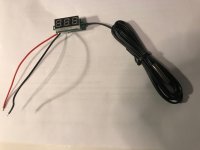markz said:I know I probably already mentioned this in this thread somewhere, but my Leaf 1500W doesnt have very long axles on either side at all. It kind of pisses me off actually.
My mxus 3kw 45H had longer axles with a ton more room to install my handiwork T.A.'s out of 1/4" steel plate.
If you're going to run under 4kW, i'd really recommend the ebikes.ca torque arms, fitted to the hardware of your choice. I had no problems with axle length on my 135mm rear motor.


